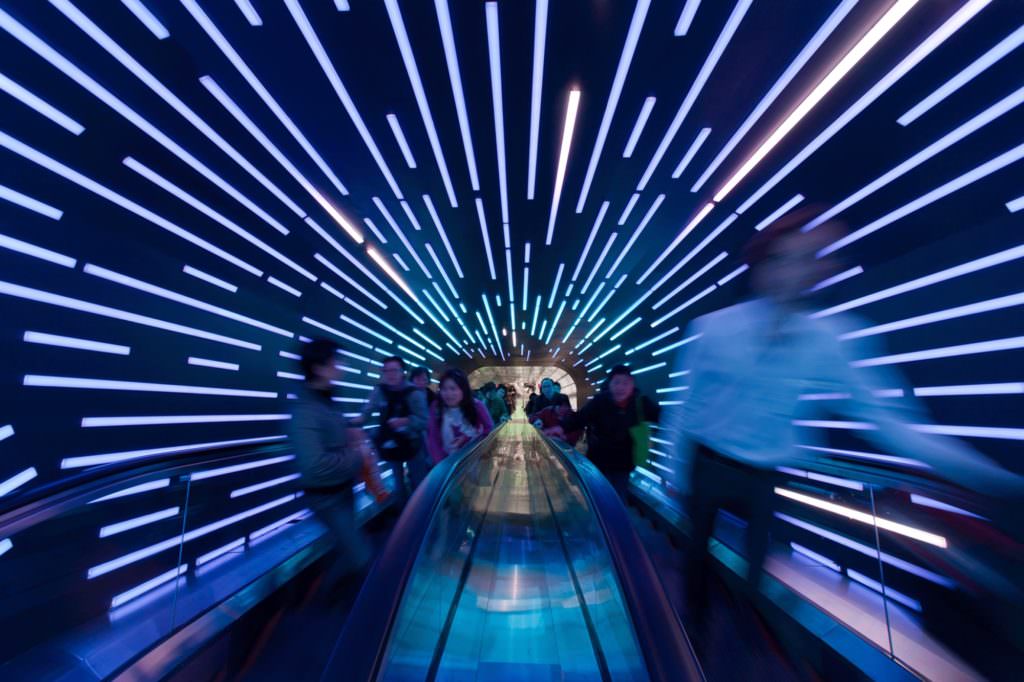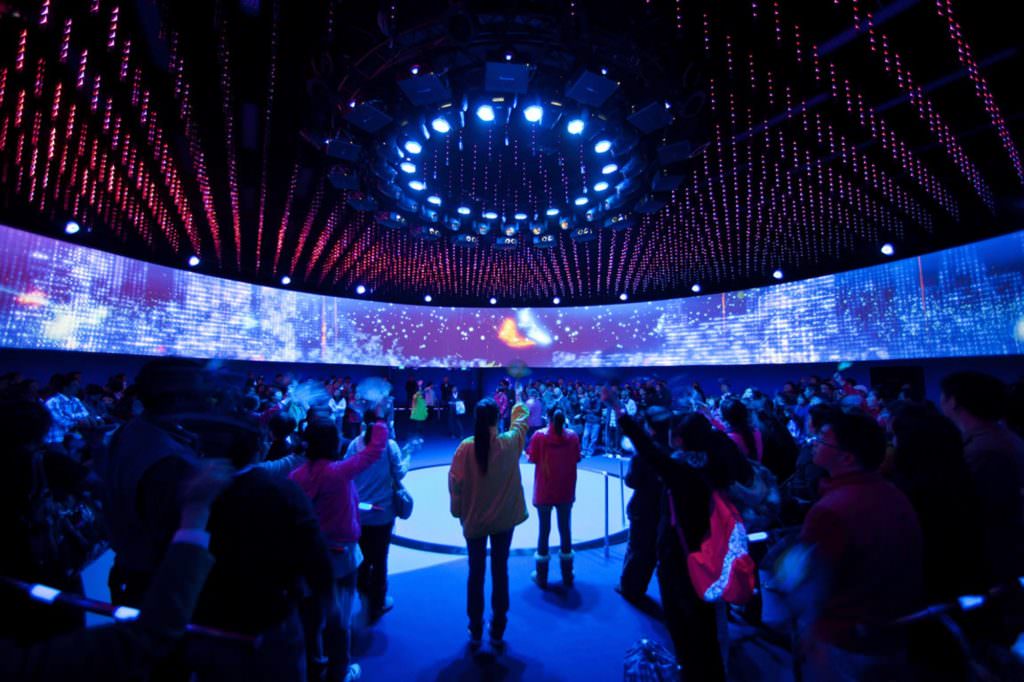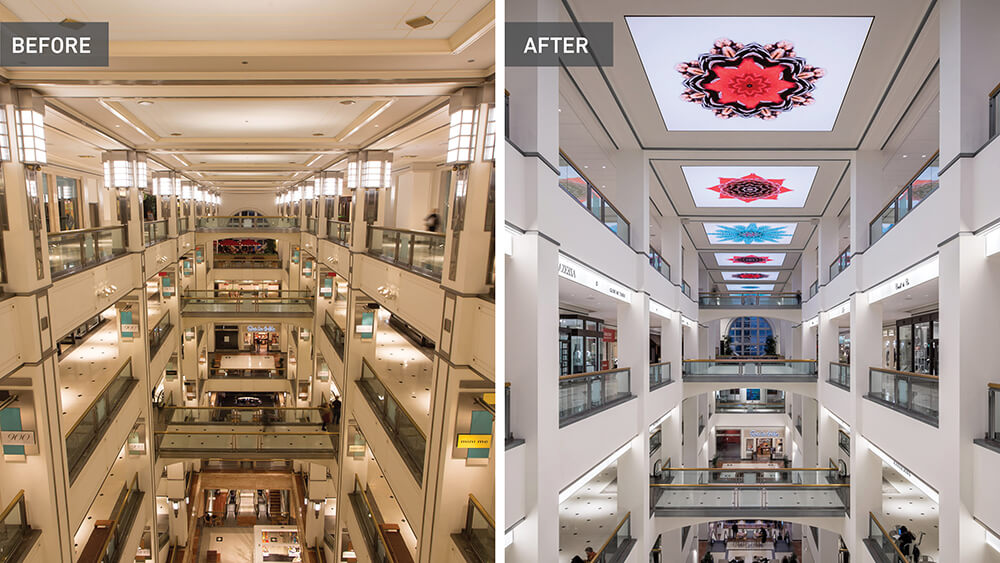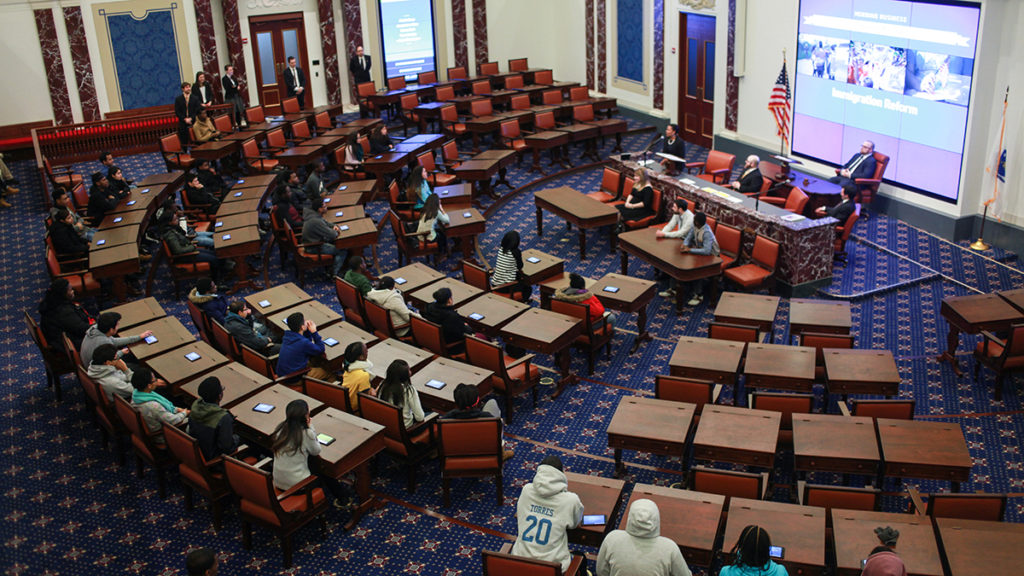Immersive Environments: Placemaking As Storytelling
Posted August 5, 2021
“Immersive Environment.” The phrase itself is seemingly redundant, as environments are necessarily things you are immersed in, and anything that surrounds you is necessarily your environment. Yet, here [at ESI Design] this phase has great meaning for me and my experience design colleagues, as it distinguishes these kinds of experiences from other spaces for a very clear reason: intentionality.
In common areas, like a lobby or a conference room or waiting rooms, the design aims to serve the user in their regular behavior. Digital media content can inform, but it shouldn’t distract; sculptures can dazzle, but they shouldn’t obstruct. The space is a tool that brightens and facilitates the ordinary. In immersive environments, the opposite is true. Through digital media, physical design, graphics and even software programming, we create immersive environments precisely to make users behave, think and see in a new different way.
There are three elements of immersive environments that drive audience transformation into a new way of thinking and seeing. First, an immersive environment needs a noticeable, impactful threshold that invites the user in and clearly proclaims that they have entered a special space. Next, the experience needs to expand beyond a single field of vision, and ideally engage as many senses as possible. Finally, the design of the environment needs to facilitate interaction among the users themselves.
Watch: Examples of Immersive Environments
Invitation To Experience
The threshold moment is key to creating an immersive environment. The experience takes place in the mind of the user, and to enter the right mindset users need a cue that indicates they’ve entered a new kind of space. Ideally, threshold provides contrast, with changes in lighting, sound, color, the size of a space, materiality, and sometimes even smell.

An example of an immersive environment is the Dream Cube from the World Expo 2010 in Shanghai. This media-enhanced journey told the story of Shanghai in the past, present, and future through digital and human interaction. To begin, visitors ascended into the experience through an escalator wellway covered in dynamic colored lights, thereby passing through the threshold in a way that let them observe the entire environment.
![]()
At 85 Broad Street, an office building in downtown Manhattan, the threshold moment is designated by LED arches that frame the entrance. The media on the arches replicates content from different elements on the interior, an effect that primes the viewer for what they will encounter inside the space.
Feature Walls, Digital Ceilings, Big Canvases
For an experience to feel fully immersive, it needs to feel like it breaks out beyond the screen. This doesn’t necessarily mean fully surrounding participants in digital media (although that certainly qualifies), as much as it involves convincing user to move their head and look around a space in a new way.

Once again, the Dream Cube is a good example of this principle at work. On the inside, wall-mounted displays, digital ceilings, and path marked along the floor created 360-degree experience. The Dream Cube also used a mixture of traditional media, digital interactives, light installations, and variable soundscapes to activate multiple senses and encourage the visitors to explore every nook and cranny.

900 North Michigan Shops, an upscale, vertical mall in Chicago, provides another, more practical example of how immersive environments can transform a space and transport a viewer. Unlike the Dream Cube, 900 North Michigan Shops is a retail environment for shoppers, limiting the possible media surfaces. To compensate, we achieved an immersive environment through an ultra-high-resolution digital ceiling. The extreme size of the digital ceiling ensures that no viewer can see the entire canvas at once, which thereby creates a sense of immersion.
The Best Interactive Technology Is Other People
Spontaneous collaboration and a new relationship to strangers is at the heart of immersive design. Sometimes, this can mean something as simple as pointing up in awe at an expectedly beautiful piece of media in the hope that everyone else around you will see it as well. But the best of our immersive environments encourage people to work together in service of something bigger than themselves.

At end of each Dream Cube visit, groups gathered in a large theater where, by coordinating their movements, they triggered changes in the cube’s exterior LED surface. At the Edward M. Kennedy Institute for the U.S. Senate, we crafted an exact recreation of the Senate floor, and augmented it with interactive media so visiting school groups can role play as legislators in the same environment as actual lawmakers. In both cases, digital interactives are merely a conduit for human interactions that wouldn’t be possible in a more traditional, less immersive environment.
If experiences like these doesn’t get someone thinking and seeing in a new way, we’re confident it won’t be for lack of immersion.


Join The Conversation